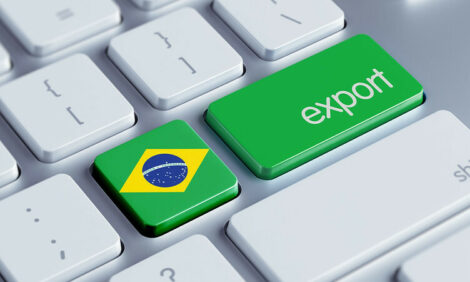



Beef and Dairy Driving Food Sector
IRELAND - Irish food and drink exports maintained their strong upward growth path in 2007 adding a further €414 million in sales, reaching €8.62 billion according to Bord Bia’s Export Performance. Some 55% of the sector’s exports, in equal proportion, were accounted for by meat and dairy products.“The Food and Drink sector’s solid export performance has been underpinned by the upward pressure on global food prices that emerged during 2007 and that is set to remain a feature of the international marketplace in 2008 and beyond”, according to Aidan Cotter, Chief Executive, Bord Bia commenting at the launch of the report. “The high export orientation of the sector, accounting for 10 per cent of the country’s merchandise exports, means it is well positioned to exploit these global trends and maintain its contribution to Ireland’s economic performance”, he added.
The principal sectoral driver of growth last year was the dairy industry, whose 13 per cent increase in exports amounted to more than €270 million or 65 per cent of the total rise in food and drink exports. The market region experiencing the highest growth in turn was Asia, which accounted for as much as one-third of the increase in total exports, already reaching the government target set for the region in its Asian strategy for 2009, of €400 million.
* "The dairy sector’s main challenge now is to consolidate the gains made during 2007 in the context of an easing in prices." |
|
Adian Cotter.
|
The exceptional performance by the dairy industry, with exports reaching €2.36 billion, benefited from a significant strengthening in global prices for dairy commodities and ingredients. The global market was boosted by lower output due to drought and flooding in some key producing regions and especially the fact that global demand continues to grow at a faster rate than supply, particularly in Asia and the oil producing regions. This is reflected in the fact that approximately 50 per cent of the growth in Irish dairy exports in 2007 came from Asian markets.
Weakness in European markets resulted in Irish meat exports easing back, falling by three per cent to €2.38 billion in 2007. Beef, which makes up the largest component of meat exports, fell by two oper cent in value despite a small volume increase, including the sixth successive year of sustained growth to Continental EU markets. Over 98 per cent of exports are now destined for European markets and with EU male cattle prices falling by five per cent and sterling weakening towards the end of the year, market returns came under growing pressure.
However, a further increase in Europe’s beef deficit in 2008 together with the recent restrictions announced by the EU Commission in relation to the import of Brazilian beef into the EU will have a significant impact on the market and have a positive effect on Irish market returns as the year progresses.
Since the emergence of an EU deficit at the beginning of the decade, the anticipated market buoyancy has failed to materialise, as low-priced beef from Brazil, already excluded from other high-priced markets, including the US and Japan, targeted the EU with increased exports. The principal destinations for Brazilian imports are the UK, the Netherlands, and Italy, which also represent Ireland’s largest markets for prime beef.
The prospects for Irish food and drink exports overall in 2008 are also positive with global markets set to remain strong. “The dominant factor underlying the recent rise in prices would appear to be a supply shortfall induced by poor harvests and drought conditions”, according to Aidan Cotter. “Nevertheless it is clear that increasing Asian demand, the use of land for biofuels and climate change are poised to play a growing role in food markets. In particular, the changing market environment is set to further enhance the competitive advantage of Ireland’s grass-based dairy and meat sectors”, he stated.
“The dairy sector’s main challenge now is to consolidate the gains made during 2007 in the context of an easing in prices, although a prospective increase in quotas will support volumes during 2008. The prospect of further, needed price increases in the early part of the year should support growth in the prepared foods sector while beverage exports will continue to benefit from growing demand in developing regions”, according to Aidan Cotter.
However, Bord Bia notes that an increasingly fragile balance between demand and supply brings the potential for significant volatility in commodity markets. This has already been evident in the pattern of dairy commodity prices which began to ease significantly in the latter part of 2007, following their steep rise in the earlier part of the year.
Also, the Irish food and drink industry, with many processors now facing rising ingredient costs in addition to other operating cost increases, continues to face significant competitive challenges in its principal, UK market as revealed in a recent Bord Bia survey. In the survey some 76 per cent of respondents stated that difficulty in securing a price increase was having a very high or high impact on their business. A further 71 per cent said that increasing retailer power was having a very high or high impact on their sales, up from 62 per cent a year earlier. Finally, some 75 per cent of companies felt that intensity of competition was having a very high or high impact on their sales compared with 56 per cent in 2006.
TheCattleSite News Desk


